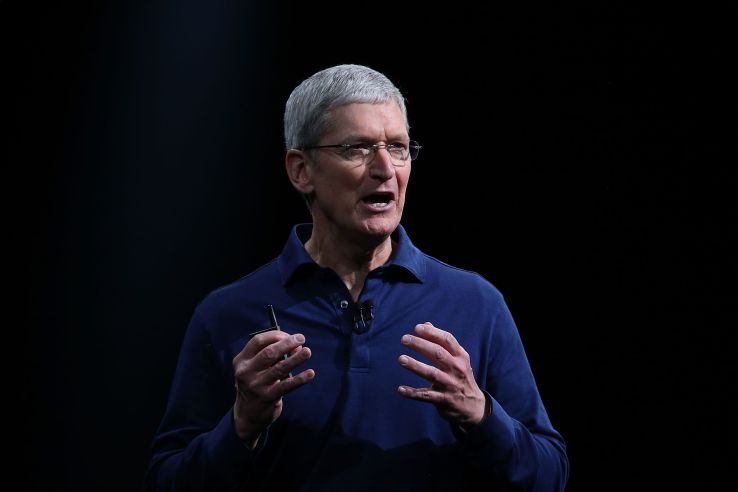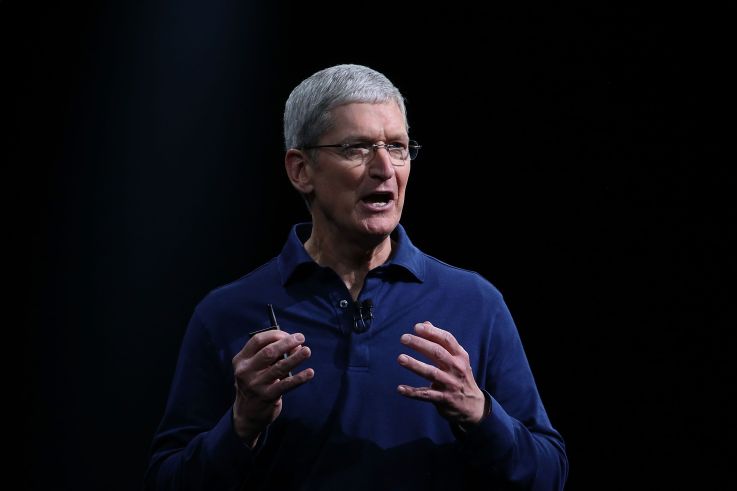

In Tim Cook’s recent exclusive interview with ABC, he gave us insight into what he thinks the “digital you” will do. He specifically mentions real-time meetings in real spaces — “this gives the capability for both of us to be very present and be talking to each other, and have other things — visually — for both of us to see,” said Cook — acknowledging the all-too-obvious first use of a digital you. But what else is there?
Having been lucky enough to have met my digital self (see below) thanks to a company called Cappasity, I have some thoughts. Like humans, the digital you (AKA holoportation) will go through an evolution. No, Scotty won’t be beaming me or you to Klingon to do battle like Captain Kirk — but pretty damn close.
The first step? It probably won’t be the “Skype on steroids” that Cook alluded to. That technology — your digital avatar moving in the real world, in real time — requires multiple camera angles, serious computing power and the right equipment to watch, at least in the short term. For consumers, the digital you will evolve a little differently.
First, we will see non-interactive, static 3D models — you’ll be trying on clothes without even getting out of bed. Companies like European online clothing giant Zalando were trying this — even three years ago. That can evolve into dynamic 3D models — the digital you will be able to move, and maybe talk.
Next, you’ll get animated and go virtual. Wearing a VR headset like HTC Vive or Oculus Rift, your digital you can be present in virtual spaces to have a date, collaborate with colleagues or play a game. Check out Mark Zuckerberg playing ping pong, or, see what Mimesys is doing — they are working on enabling real-time holoportation in VR. While the quality of the person’s rendering is still rough, there is no question that it will be perfected over time.
This could get pretty fun, too — imagine the viral-hit animated renderings of apps like MSQRD or Snapchat (which is rumored to be making an AR wearable) on a full-size scale. (If I built the first human-size digital you animation app, I’d be inclined to name it after the shape-shifting Polyjuice Potion from Harry Potter!)
But let’s go where Tim took us: not virtual reality, but augmented reality; if you will, reality-reality. Back to what he said: “[Augmented Reality] gives the capability for both of us to sit and be very present, talking to each other, but also have other things — visually — for both of us to see.” So video chat — in the real world. He continues: “Maybe it’s something we’re talking about, maybe it’s someone else here, who’s not here present, but who can be made to appear to be present.”
The future is arriving faster than ever — and virtual people made out of pixels will be here before you know it.
It’s an interesting (and obvious) stipulation — there’s no question that accessible video chat like Skype or FaceTime has evolved the way we communicate with those far from us, whether it’s colleagues or friends and family.
But I think Tim’s holding back. What else could the digital you do? Whether or not Elon Musk is right and we are all living in a simulation, it’s time for me — the real me — to speculate. Let’s take a tip from House of Cards, and follow the money: Where’s the income stream?
It’s a great question. In the case of Skype on steroids, it’s a service. Beyond that? It seems that the end user is either the consumer, or, potentially, the product (in the manner that Facebook users are the product). For retailers like Amazon or Zalando — or anyone selling clothes, accessories or wearables — the application is immediate and obvious: increase sales with deeper market penetration and more connected customer conversation.
But what next? The possibilities are interesting: celebrity visits in your home, virtual gaming environments (except the environment isn’t virtual, it’s your living room) or even education — ballet lessons, lectures and more. There’s even a real-world example: If you’re a HoloLens developer, you can play with the appropriately chosen George Takei, anywhere you please.
As you can see, Microsoft has already started playing in this space. In addition to the George Takei giggle, they also ran a little experiment with NASA — and have advanced the technology even more to create the video below, which is a bit more complicated than what they’ve done by teleporting Takei.
This brings us to the interesting dichotomy of the digital you: there are two. The one others (and you) can observe, and the one you experience — where your eyes are replaced by cameras, and your ears by microphones.
Which raises the question: How far can it go? Can haptic sensors let the digital you… feel? Are we talking the NSFW scene with Sandra Bullock and Sylvester Stallone in Demolition Man? Given the porn industry’s history of tech innovation, the answer is, probably — but adding in haptics, smell or 3D audio can have other benefits, too.
Once those cameras and sensors can capture other environments accurately enough, you can be places you aren’t. For instance, in a nuclear waste area, or in training for a war zone… any time you want to experience or manipulate the meatspace without actually being turned into ground beef.
The other question: Can the digital you do one job, while you do another? Depends. Driving and texting clearly has bad repercussions. But even though we should probably limit multitasking to walking and chewing bubble gum, it is possible, to a degree. However, much of the multitasking limit may come from our RAM-deficient human grey matter, not technology.
A college professor probably can’t teach physics in one classroom and mathematics in another. But can a homeowner paint his deck while balancing his budget? Or weed the garden while delivering a lecture? Maybe. Where it does clearly work, though, is when one simply needs to appear in two (or more) places at once — great for a CEO who needs to present to shareholders or investors, or politicians meeting and greeting citizens.
Moral questions above notwithstanding, the existence of the digital you gives rise to a few other concerns: namely, can the digital you be hacked? The answer here is clearly yes. Anything we choose to throw up online is going to be vulnerable. How does the digital you get verified? Do you need a digital passport? Are we all going to need Base 58 binary-to-text encoding à la bitcoin? Part of this depends on how quickly the technology advances, what we are doing with it and how responsible we treat this unstoppable development.
The digital you probably will not be signing checks any time soon, but it is not hard to imagine hackers and scammers achieving impressive new levels of old-school social engineering hacks — if you were worried about Granny giving away the bank to a scam artist, it might be even harder to resist if said scammer looks like you and is sitting in her living room. The good news? While it might be very easy to mimic the appearance of someone, voice and intonation are probably a bit more difficult. The best defense against criminalizing the digital you might simply be the people you know.
The truth is that most of us will probably be most fascinated by meeting and seeing real (at least, appearing to be real) people — we want to see our friends, kids and family, and be transported to a place where they are, if only digitally.
Eventually, I think that immersive experience — sharing a setting, a location, essentially occupying a mutual space — means the digital you will eventually exist beyond virtual reality and move into augmented reality. This, I believe, is the ultimate use case — although not necessarily the most common, or useful — simply the most evolved form. Just think what companies like Magic Leap can do if speculation about their hardware is true! If that is how great minds like Cook see holoportation helping in the future, I agree with him.
As to when that will become a real reality, we can only make predictions. If the past three decades have taught us one thing, it is that the future is arriving faster than ever — and virtual people made out of pixels will be here before you know it.
But, much of this depends on hardware, and the price of said hardware. One thing we do know? The two big players, Microsoft and Apple, are in. Tim’s talking the talk and walking the walk — Apple is investing big in AR, and he clearly says in comparison to VR that “my own view is that augmented reality is the larger of the two, probably by far.” So even though you may know yourself pretty well, get ready — soon you’ll also meet your own digital you. Although I am guessing Tim will have the chance to meet his, first — if he hasn’t already.
Featured Image: Justin Sullivan/Getty Images

